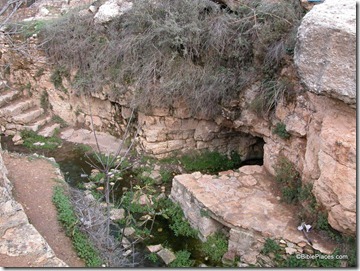From Haaretz:
Springs in the Judean Hills that were the basis for agriculture as far back as the Second Temple era are drying up due to successive drought years and have become polluted, according to a study carried out this year.
The study, conducted this spring by the Israel Nature and Parks Authority under the direction of the Water Authority, was the first of its kind in 30 years. It included 67 of the almost 90 springs in an area from Jerusalem in the east westward almost to Beit Shemesh.
Water quality and quantity, as well as the area surrounding each spring, were examined. The survey included the Sataf, Ein Hindak and Ein Lavan springs, all popular hiking spots, as well as the spring in the center of Abu Gosh.
The surveyors found water in only two-thirds of the springs. Of the springs with water, the flow rates were lower than in previous years and in one out of three springs the water quality was poor or fair.
The surveyors pointed to several consecutive low-rainfall years as the main reason for the low water levels.
Six of the past eight years met the criteria for drought years. Last winter, for example, saw only 60 percent of the average annual rainfall in the region.
The article also describes the impact of human activities on the springs and reports that last year the terraced fields of the Judean hills were recommended as a UNESCO World Heritage Site.
